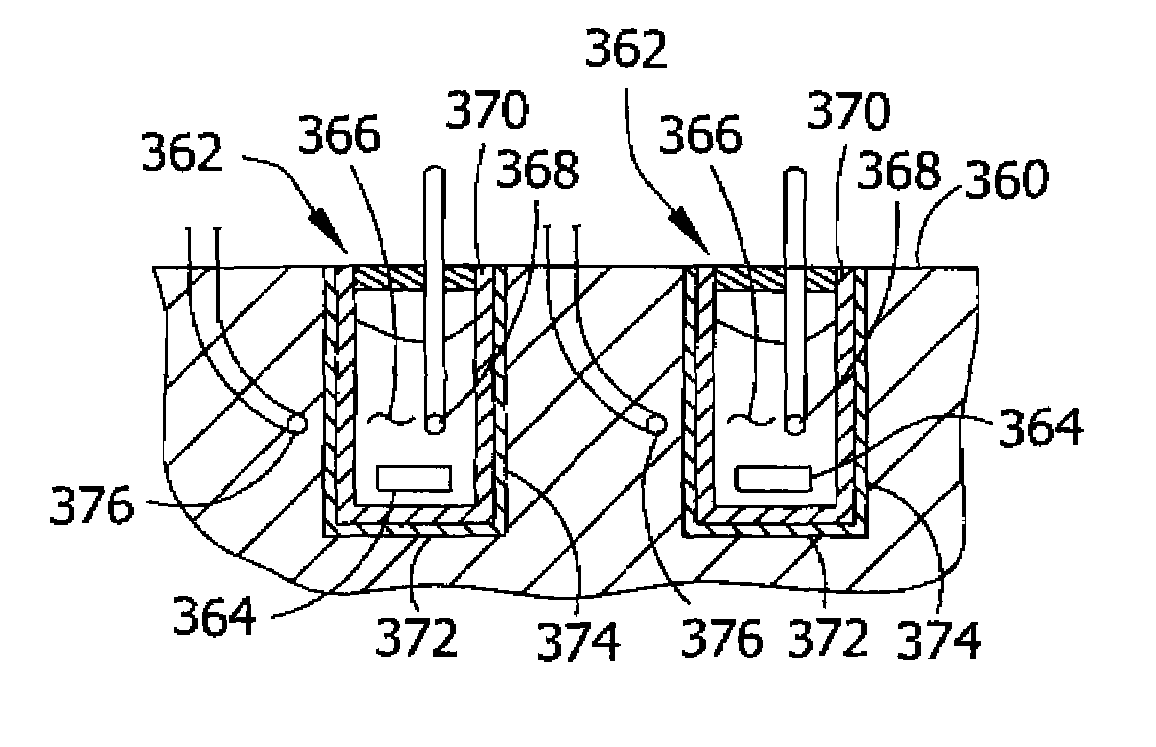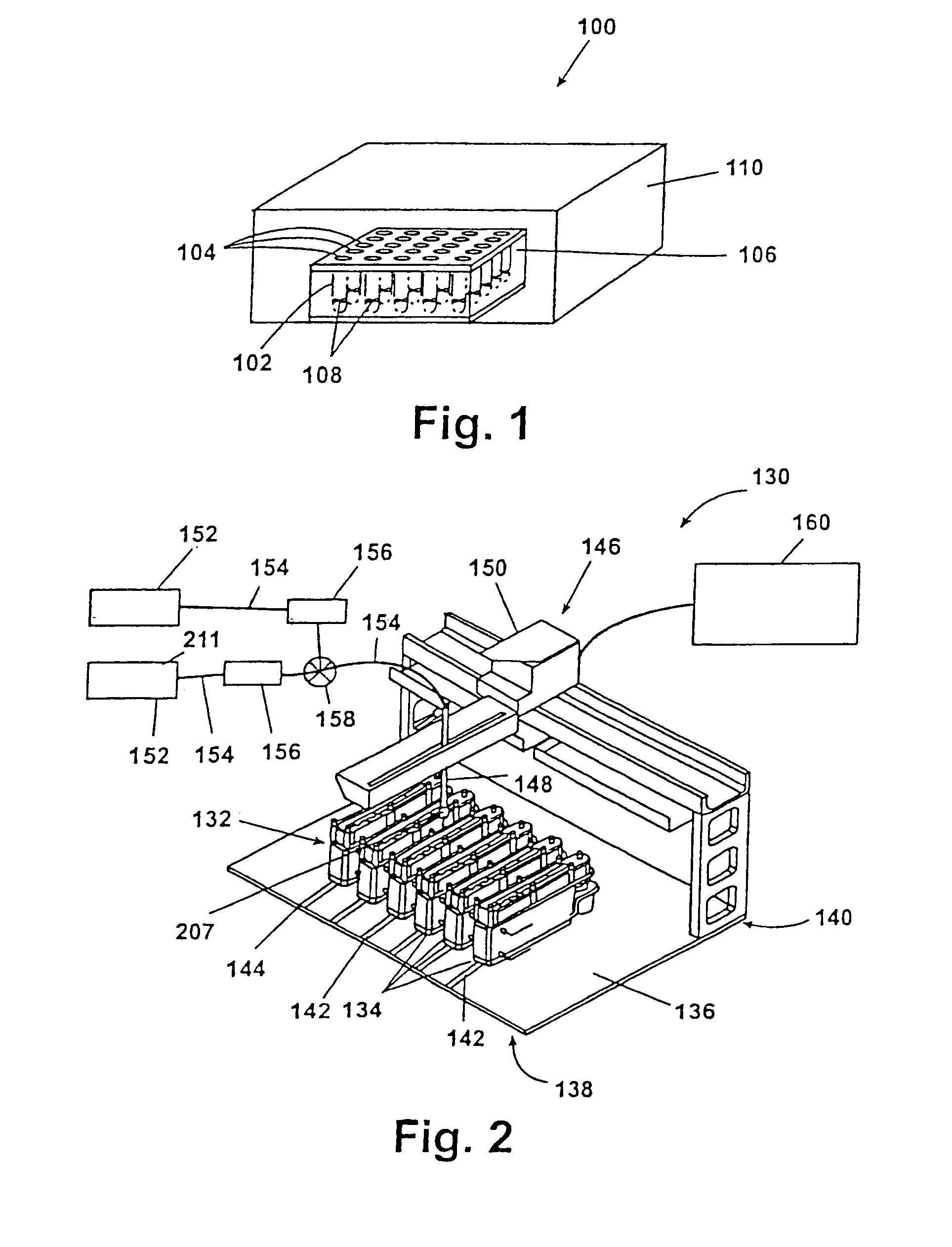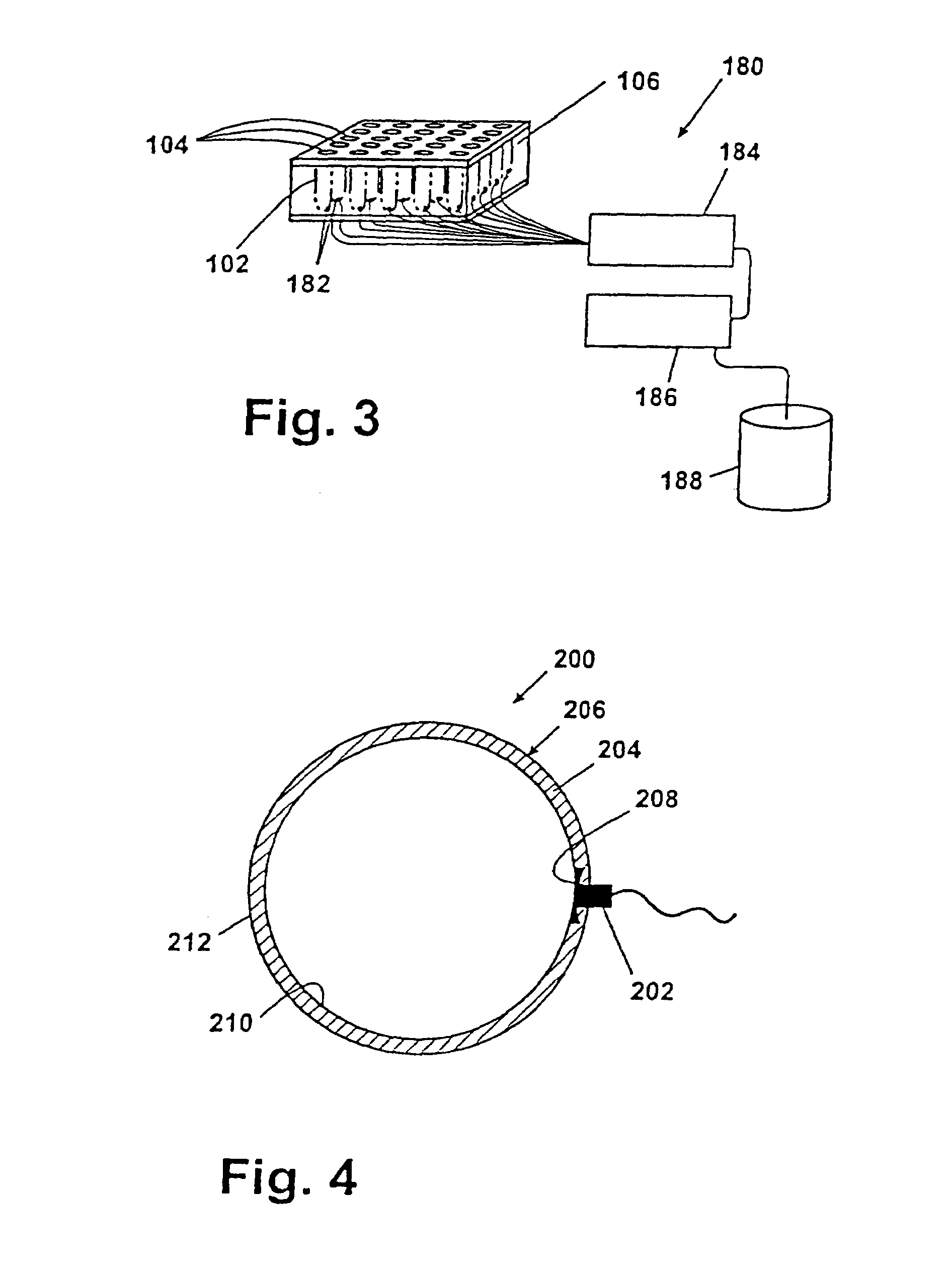Parallel reactor with sensing of internal properties
a technology of internal properties and parallel reactors, applied in the direction of ratio control, apparatus with spatial temperature gradients, chemical/physical/physico-chemical stationary reactors, etc., can solve the problems of unintentional gas flow, slow synthesis of chemicals, and many workers who have not realized the value of process variables, etc., to achieve the effect of reducing unintentional gas flow
- Summary
- Abstract
- Description
- Claims
- Application Information
AI Technical Summary
Benefits of technology
Problems solved by technology
Method used
Image
Examples
example 1
Calibration of Mechanical Oscillators for Measuring Molecular Weight
[0160]Mechanical oscillators were used to characterize reaction mixtures comprising polystyrene and toluene. To relate resonator response to the molecular weight of polystyrene, the system 870 illustrated in FIG. 30 was calibrated using polystyrene standards of known molecular weight dissolved in toluene. Each of the standard polystyrene-toluene solutions had the same concentration, and were run in separate (identical) vessels using tuning fork piezoelectric quartz resonators similar to the one shown in FIG. 28. Frequency response curves for each resonator were recorded at intervals between about 10 and 30 seconds.
[0161]The calibration runs produced a set of resonator responses that could be used to relate the output from the oscillators 872 immersed in reaction mixtures to polystyrene molecular weight. FIG. 32 shows results of calibration runs 970 for the polystyrene-toluene solutions. The curves are plots of oscil...
example 2
Measurement of Gas-Phase Reactant Consumption by Pressure Monitoring and Control
[0164]FIG. 34 depicts the pressure recorded during solution polymerization of ethylene to polyethylene. The reaction was carried out in an apparatus similar to that shown in FIG. 31. An ethylene gas source was used to compensate for ethylene consumed in the reaction. A valve, under control of a processor, admitted ethylene gas into the reaction vessel when the vessel head space pressure dropped below PL≈16.1 psig due to consumption of ethylene. During the gas filling portion of the cycle, the valve remained open until the head space pressure exceeded PH≈20.3 psig.
[0165]FIG. 35 and FIG. 36 show ethylene consumption rate as a function of time, and the mass of polyethylene formed as a function of ethylene consumed, respectively. The average ethylene consumption rate, −rC2,k (atm·min−1), was determined from the expression
[0166]-rC2,k=(PH-PL)kΔtkXIII
where subscript k refers to a particular valve cycle, and ...
PUM
 Login to View More
Login to View More Abstract
Description
Claims
Application Information
 Login to View More
Login to View More - R&D
- Intellectual Property
- Life Sciences
- Materials
- Tech Scout
- Unparalleled Data Quality
- Higher Quality Content
- 60% Fewer Hallucinations
Browse by: Latest US Patents, China's latest patents, Technical Efficacy Thesaurus, Application Domain, Technology Topic, Popular Technical Reports.
© 2025 PatSnap. All rights reserved.Legal|Privacy policy|Modern Slavery Act Transparency Statement|Sitemap|About US| Contact US: help@patsnap.com



